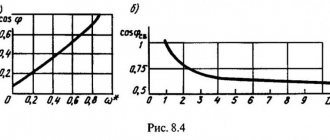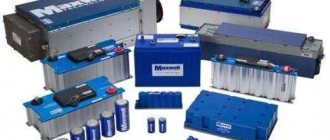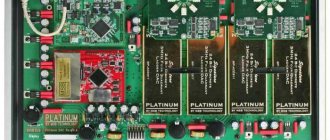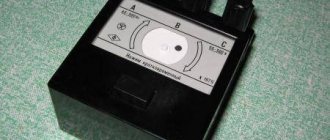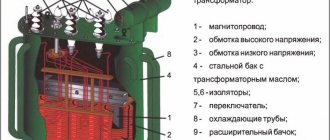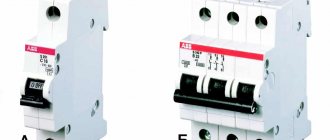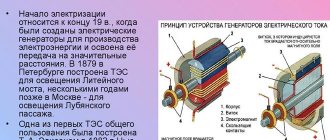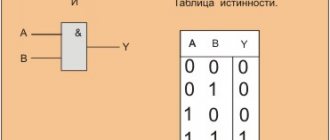Basic parameters of an audio amplifier
Power
The first parameter by which a sound amplifier is selected is its power. This parameter characterizes the degree of possible amplification of a sound wave in a certain situation.
Sensitivity
The second important parameter of amplifiers is the sensitivity of the amplification system. This parameter characterizes the amount of sound pressure in dB that will be created at a distance of 1 meter when a power of 1 W is supplied to the speaker system. If the speaker system has a high sensitivity coefficient, then even with a small input power, a high sound volume will be provided than for a device with a low sensitivity level.
Classification and applications of electronic amplifiers
An electronic amplifier is a device that allows you to increase the power of an input electrical signal using the energy of the amplifier's power supply using amplification elements (transistors, operational amplifiers, etc.) at a given level of distortion.
Electronic amplifiers are one of the most important and widely used devices in systems for transmitting and processing various information represented by electrical signals! The high sensitivity, speed, compactness, and efficiency of electronic amplifiers have led to their widespread use in measuring technology, electrical and radio communications, automation, computer technology, etc.
Amplifier classification:
1. By type of amplification element (tube, transistor, tunnel diode, parametric diode)
2. By the type of quantity being amplified (voltage, current and power amplifiers)
3. By the number of cascades (one-, two- and multi-stage)
4. According to the frequency range of the signals being amplified (low frequency amplifiers, DC amplifiers, selective amplifiers, pulse or broadband amplifiers)
Low frequency amplifiers (LF) are used to amplify continuous periodic signals in the low frequency range (from tens of Hz to tens of kHz). A feature of the ULF is that the ratio of the upper amplified frequency fв to the lower fн is large and ranges from several hundred to several thousand.
Direct current amplifiers (DCA) are designed to amplify slowly varying voltages and currents in the frequency range from zero to some small frequency.
Selective amplifiers , characterized by small values of the ratio of the upper and lower frequencies (1v /fn ≤1.1). As a rule, these are high frequency amplifiers (UHF).
Pulse, or broadband, amplifiers operate in the range from several kilohertz to several tens of megahertz and are used in pulse communication devices, radar and television.
An electronic amplifier is a device that allows you to increase the power of an input electrical signal using the energy of the amplifier's power supply using amplification elements (transistors, operational amplifiers, etc.) at a given level of distortion.
Electronic amplifiers are one of the most important and widely used devices in systems for transmitting and processing various information represented by electrical signals! The high sensitivity, speed, compactness, and efficiency of electronic amplifiers have led to their widespread use in measuring technology, electrical and radio communications, automation, computer technology, etc.
Amplifier classification:
1. By type of amplification element (tube, transistor, tunnel diode, parametric diode)
2. By the type of quantity being amplified (voltage, current and power amplifiers)
3. By the number of cascades (one-, two- and multi-stage)
4. According to the frequency range of the signals being amplified (low frequency amplifiers, DC amplifiers, selective amplifiers, pulse or broadband amplifiers)
Low frequency amplifiers (LF) are used to amplify continuous periodic signals in the low frequency range (from tens of Hz to tens of kHz). A feature of the ULF is that the ratio of the upper amplified frequency fв to the lower fн is large and ranges from several hundred to several thousand.
Direct current amplifiers (DCA) are designed to amplify slowly varying voltages and currents in the frequency range from zero to some small frequency.
Selective amplifiers , characterized by small values of the ratio of the upper and lower frequencies (1v /fn ≤1.1). As a rule, these are high frequency amplifiers (UHF).
Pulse, or broadband, amplifiers operate in the range from several kilohertz to several tens of megahertz and are used in pulse communication devices, radar and television.
Classification of sound amplifiers
Based on the use of audio amplifiers, they can be divided into two main categories: household and professional.
Household amplification devices are primarily designed to provide a low level of sound amplification with minimal distortion. Such amplifiers are mainly used for home music systems, for which the important factor is sound quality, not volume.
Professional amplification systems, in turn, are divided into concert, studio and instrumental. The proposed sound systems are mainly used for professional use in organizing concerts, studio recordings, scoring various events, etc. A distinctive feature of this type of equipment is its high efficiency and the ability to obtain significant sound amplification with the ability to transmit it to powerful sound reproduction sources over long distances.
General principles of amplifier design
In a nutshell, an amplifier consists of a sequence of amplification stages connected to each other. Although there are also single-stage amplifiers. An amplification stage is an amplifier stage consisting of one or more amplification elements, a load circuit and connections to other stages. Amplification elements can be represented by vacuum tubes, transistors and even tunnel diodes.
In addition to direct interstage connections, there are also negative feedback connections, which make the operation of the amplifier more stable and reduce the degree of signal distortion. For this purpose, amplifiers use, for example, thermistors to stabilize the temperature during operation of the amplifier or frequency-dependent components that equalize a particular characteristic.
Also between the amplifier stages, in the input and output circuits, attenuators or potentiometers can be used to regulate the degree of signal amplification, and filters to regulate and set the frequency response.
Amplifiers can be divided into analog and digital. Obviously, in analog devices, the input signal is amplified by analog stages and is not subject to further digitization, remaining analog at the output. In digital amplifiers, the analog input signal, after analog amplification, is subjected to analog-to-digital conversion, and the output signal is already digital.
